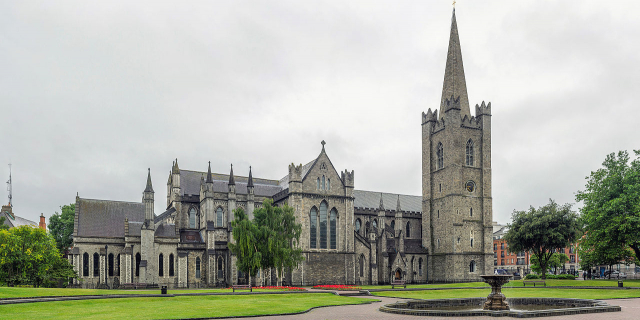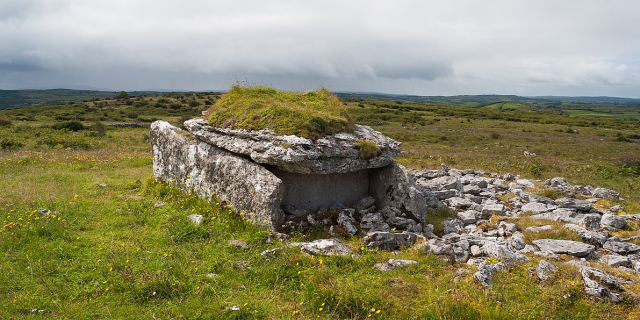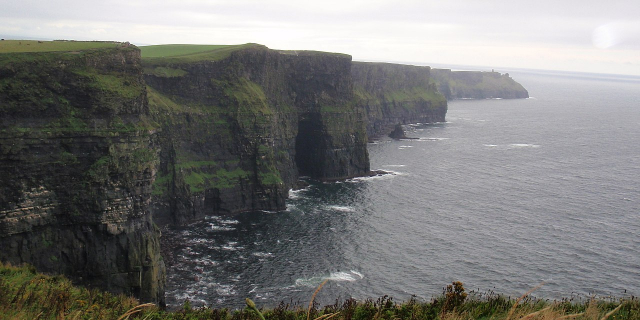Poulnabrone dolmen (Irish: Poll na Brón, lit. 'Hole of Sorrow') is a large dolmen (or cromlech, a type of single-chamber portal tomb) located in the Burren, County Clare, Ireland. Situated on one of the most desolate and highest points of the region, it comprises three standing portal stones supporting a heavy horizontal capstone, and dates to the Neolithic period, with estimates to between 4200 BC and 2900 BC. Although not the largest, it is the best known of the approximately 172 dolmens in Ireland.
It was constructed on a karst landscape formed from limestone laid down around 350 million years ago. The dolmen was built by Neolithic farmers, who chose the location either for ritual, as a territorial marker, or as a collective burial site. What remains today is only the "stone skeleton" of the original monument; originally it would have been covered with soil, and its flagstone capped by a cairn.
W...Read more
Poulnabrone dolmen (Irish: Poll na Brón, lit. 'Hole of Sorrow') is a large dolmen (or cromlech, a type of single-chamber portal tomb) located in the Burren, County Clare, Ireland. Situated on one of the most desolate and highest points of the region, it comprises three standing portal stones supporting a heavy horizontal capstone, and dates to the Neolithic period, with estimates to between 4200 BC and 2900 BC. Although not the largest, it is the best known of the approximately 172 dolmens in Ireland.
It was constructed on a karst landscape formed from limestone laid down around 350 million years ago. The dolmen was built by Neolithic farmers, who chose the location either for ritual, as a territorial marker, or as a collective burial site. What remains today is only the "stone skeleton" of the original monument; originally it would have been covered with soil, and its flagstone capped by a cairn.
When the site was excavated in 1986 and again in 1988, around 33 human remains, including those of adults, children (and the remains of a much later Bronze Age infant) were found buried underneath it. Also discovered were various stone and bone objects that would have been placed with the dead at the time of interment. The human remains and objects are estimated to have been buried intermittently during the 600 year period between 3800 and 3200 BC.





























Add new comment